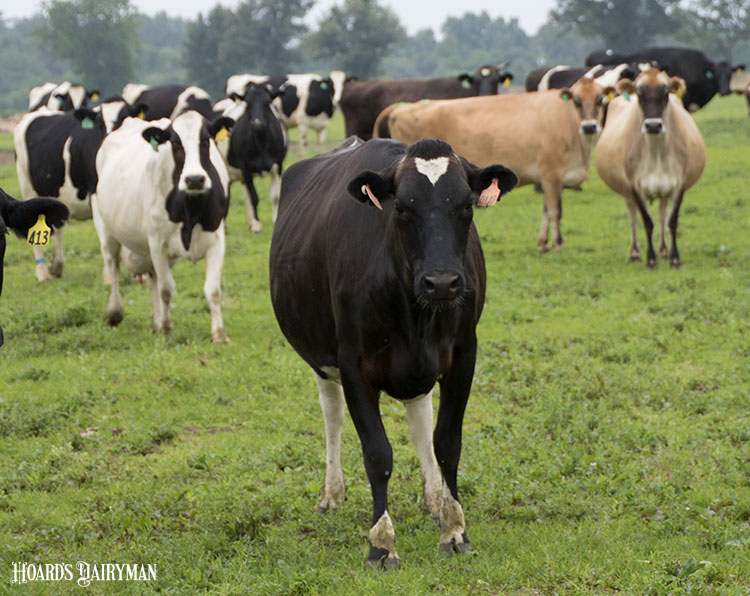
Over the past two months, a number of consultants asked why some of their Holstein herds’ milkfat and protein concentrations are well above historic levels. These herds are located from Michigan to New York and are encroaching upon Jersey herd milkfat and protein production. Of course, I am exaggerating the Holstein to Jersey comparison slightly and recognize Jerseys produce milk component levels well above Holsteins.
However, the Holstein herds in the region up for discussion here have produced historic butterfat and protein levels, without sacrificing overall milk production. In some cases, speaking with my colleague Don Burkard in western N.Y., we’ve recognized butterfat levels approaching 4.4% to 4.5% and protein eclipsing 3.4%!
Leaning on prior experience, I speculated that the record component production for these Eastern dairies ties into improved rumen microbial metabolism and growth. I believe the microbial gains are resulting from something different in this year’s feed. It may be attributed to corn grain composition and digestibility.
Pulling from past experiences
Admittedly, I don’t come into this working hypothesis blindly. In prior experience with Midwestern herds, there was a period of unparalleled component production, and we were able to connect excellent component yields to unique silage and grain starch rumen digestibility. In this case, unique equates to a smooth carbohydrate digestion process in the rumen. The rumen thrives off consistent nutrient digestion, starting with starch and sugar and then carrying over to fiber. The smoother this process is, the better the microbes can do.
Think of starch in this case like starting fluid for a diesel engine. To get the engine running well we need a bit of consistency when spraying the starting fluid. We can’t just spray a large amount in and turn the engine over. We need a consistent spray before the diesel warms up and takes off.
This year, corn grain starch digestibility appears to be pairing better with silage starch and fiber digestibility. This smoothly digesting fiber and starch combination for many may be the key to yielding exceptional microbial growth and component production. The carbohydrates are working together in synchrony, just like the right amount of starting fluid works to get a high-powered diesel engine up and running.

Drilling into Rock River Laboratory’s database to visualize the corn digestibility this year, Figures 1 and 2 detail starch digestibility and total digestible nutrient concentration. It’s obvious that rumen starch digestibility is moderate for 2020 dry ground corn grain relative to 2019. The total digestible nutrient (TDN; Figure 2) level is also lesser and more moderate for 2020 due to the lesser starch digestibility. In most years, lesser starch digestibility and energy value would be a negative. But this year, these two corn grain nutrition aspects could prove to be a positive for 2021 herd performance.

We also have exceptional silage quality and fiber digestibility this year for many, but we’ve experienced that in the past without these outstanding component levels. Hence, this grain quality is the one unique nutrition aspect that sticks out to me when reviewing other nutrition trends.
In the future, we may seek to replicate this smooth carbohydrate digestion by blending dry ground corn with other more quickly digesting starch sources. Take up the conversation with your nutritionist, as this is a newer aspect that we’re digging into more thanks to robust rumen starch digestibility measures being available.







